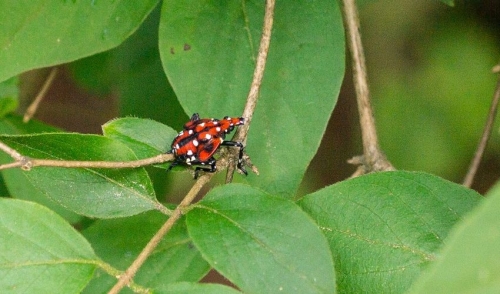
How to Manage Lanternflies
The spotted lanternfly can be a nemesis for landscapes, orchards, vineyards, rose gardens, forests, and more, but these invasive insects can be successfully managed with the proper steps and diligence. Understanding more about these bothersome bugs is the key to minimizing their damage and nuisance to your plants and property.
About the Spotted Lanternfly
The spotted lanternfly (Lycorma delicatula) is native to eastern Asia, including parts of China, India, and Vietnam. These insects were first confirmed in the United States in 2014, though it is likely they were accidentally imported several years earlier but took some time to gain a noticeable foothold. They have now been reported in a number of states, including Pennsylvania, New Jersey, New York, Delaware, Connecticut, Virginia, Maryland, and Massachusetts. It is likely that these insects are continuing to spread, but consistent management can control their numbers and reduce their impact.
Recognizing the spotted lanternfly is the first step toward managing its infestation. These insects are approximately one inch long, with pale wings that feature prominent dark spots. They have red hindwings that are covered when the wings are folded, but a hint of red can show through the pale wings. The immature nymphs can be black or red depending on their life stage. These bugs can fly but generally take long, wing-assisted jumps as they move.
Spotted lanternflies can thrive on a wide variety of plants, where they suck the sap from active trunks and limbs and can cause wilting, leaf curling, and eventual plant death in severe cases. These insects excrete sugary honeydew, and that waste can easily build up and create black sooty mold or attract other bothersome pests that can do further damage to trees and plants.
Plants most at risk from spotted lanternflies include apples, roses, birch, maple, black walnut, Virginia creepers, grapevines, and most pit fruits including cherries, apricots, peaches, plums, and nectarines. Hops is also vulnerable to spotted lanternflies, and they will also harm willows, oaks, and dozens of other trees and plants. The tree of heaven is a favored host for the spotted lanternfly and should be carefully watched for any infestations.
Controlling Lanternflies
There are several steps that should be taken in an attempt to manage lanternflies, and conscientious landscapers, homeowners, and property managers will use multiple techniques to be most effective in the fight against these pests.
Remove Eggs – Spotted lanternflies lay their egg masses from October through May, in groups of 30-50 eggs coated in a yellow-brown, waxy substance. Eggs are generally laid on smooth, vertical surfaces including tree trunks, rocks, and even artificial surfaces such as vehicles, boats, grills, and outdoor furniture. Egg masses may even be laid on firewood or woodpiles. To remove them, the masses should be scraped off into a double plastic bag and sealed carefully for disposal. The eggs can also be scraped into rubbing alcohol or hand sanitizer to kill them.
- Remove Tree of Heaven – Because this tree, also called Chinese sumac, is the preferred host for spotted lanternflies, removing it completely will eliminate a key food source for these insects. Leaving a single male tree of heaven in place can serve as a “trap tree” to lure spotted lanternflies so they can be more easily seen and removed.
- Treat Trees With Systemic Pesticides – In areas where spotted lanternflies are a probable risk, treating trees with systemic pesticides can help keep the insects at bay. Pesticides should be applied from June through August, and different varieties can be used as soil drenches, direct sprays, or trunk injections. Always follow the proper precautions and application procedures for all pesticides. Some neem oil application and insecticidal soaps can also be effective, depending on the types of plants and the severity of the insect infestation.
- Trap Nymphs Before They Mature – Spotted lanternfly nymphs travel up tree trunks to find foliage for feeding, so wrapping trunks with sticky tape can trap young nymphs before they have a chance to mature and reproduce. Tape should be wrapped tightly around the tree so the nymphs cannot avoid it, and the tape should be discarded and reapplied regularly to be most effective.
Because spotted lanternflies are invasive and damaging, it is important to report any sightings of these insects to the proper authorities. In areas already known to be infested, following proper quarantine procedures for moving equipment, mulch, rocks, and firewood can help minimize the spread of the insects, and taking multiple steps to manage these bugs can help keep them from having a devastating impact on native landscaping and agricultural operations.

